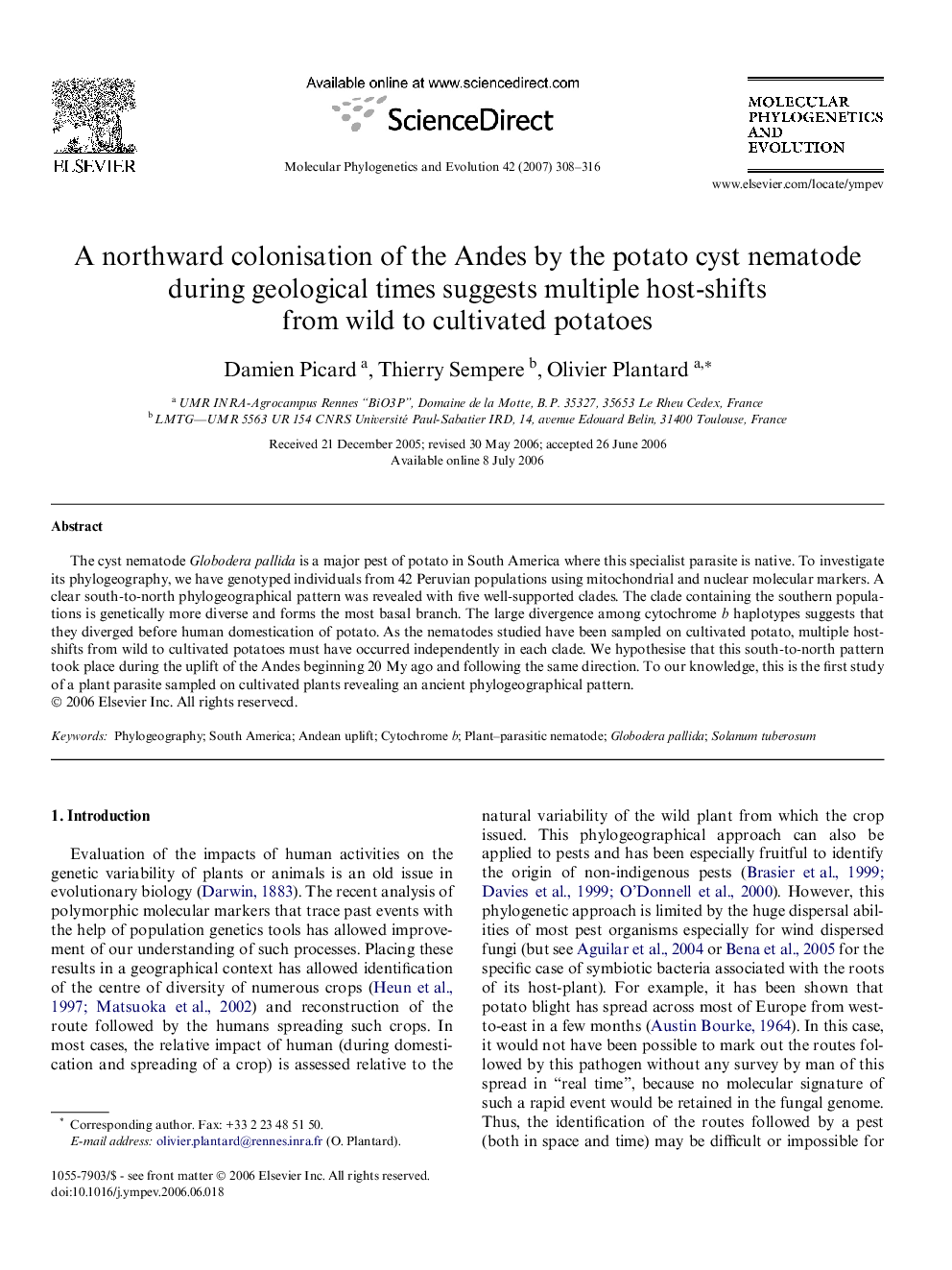| Article ID | Journal | Published Year | Pages | File Type |
|---|---|---|---|---|
| 2835516 | Molecular Phylogenetics and Evolution | 2007 | 9 Pages |
The cyst nematode Globodera pallida is a major pest of potato in South America where this specialist parasite is native. To investigate its phylogeography, we have genotyped individuals from 42 Peruvian populations using mitochondrial and nuclear molecular markers. A clear south-to-north phylogeographical pattern was revealed with five well-supported clades. The clade containing the southern populations is genetically more diverse and forms the most basal branch. The large divergence among cytochrome b haplotypes suggests that they diverged before human domestication of potato. As the nematodes studied have been sampled on cultivated potato, multiple host-shifts from wild to cultivated potatoes must have occurred independently in each clade. We hypothesise that this south-to-north pattern took place during the uplift of the Andes beginning 20 My ago and following the same direction. To our knowledge, this is the first study of a plant parasite sampled on cultivated plants revealing an ancient phylogeographical pattern.
